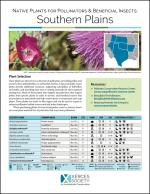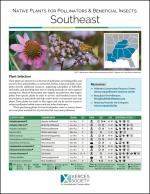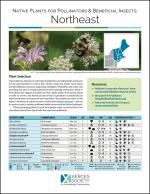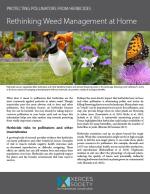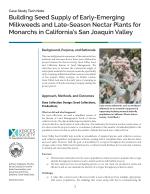As a science-based organization, the Xerces Society produces dozens of publications annually, all of which employ the best available research to guide effective conservation efforts. Our publications range from guidelines for land managers, to brochures offering overviews of key concepts related to invertebrate conservation, from books about supporting pollinators in farmland, to region-specific plant lists. We hope that whatever you are seeking—whether it's guidance on making a home or community garden pollinator-friendly, advice on developing a local pesticide reduction strategy, or detailed information on restoring habitat—you will find it here!
Find Publications
Use the search functions to sort by publication type (books, guidelines, fact sheets, etc.), location, and/or subject (agriculture, gardens, pollinators, pesticides, etc.).
Identify native plants that attract native pollinators and beneficial insects in the Southern Plains region.
Identify native plants that attract native pollinators and beneficial insects in the Southeast region.
Identify native plants that attract native pollinators and beneficial insects in the Northeast region.
Identify native plants that attract native pollinators and beneficial insects in the Midwest region.
Identify native plants that attract native pollinators and beneficial insects in the Mid-Atlantic region.
Identify native plants that attract native pollinators and beneficial insects in Florida.
Identify native plants that attract native pollinators and beneficial insects in the Great Lakes region.
This information sheet has details of the plant species included in the Pollinator Habitat Kits for the Santa Fe (NM) Pollinator Trail.
for Pollinators and Beneficial Insects
The plants on this list are recommended for use in pollinator habitat restoration and enhancement projects in agricultural landscapes in the California Central Coast Region.
for Pollinators and Beneficial Insects
The plants on this list are recommended for use in pollinator habitat restoration and enhancement projects in agricultural landscapes in the California Central Valley Region.

